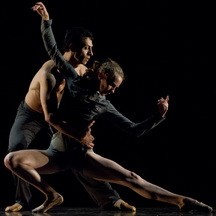San Francisco Ballet opened its production of George Balanchine’s Midsummer Night’s Dream this past Friday, the only time its been performed by company since 1985. And on Saturday, following the request of Mayor London Breed, the company has closed the War Memorial Opera House for the next two weeks in response to the corona virus threat. Although classes and smaller events presented by SFB will continue, the remainder of the ballet’s run was cancelled. How and when tickets will be honored or whether the ballet will be staged at a later date are currently undecided. Information will be posted regularly at sfballet.org.

Luckily for me, I was able to attend the Friday performance. This completely charming ballet in two acts, which debuted at the City Center of Music and Drama in New York in 1962, follows the form of a storybook ballet with the last act dedicated to a wedding celebration of courtiers and glittery soloists.
The ballet has appeal to children as well as adults and some 25 students from the SFB school swarmed the stage as the fairy king Oberon’s entourage of antennae-bedecked creatures. The timing of these small dancers was perfect and their execution of steps and positions immaculate. They were a credit to the school’s training and a thoroughly enchanting part of the performance.
Principal among the children was Mitsuki Kobayashi Denman as the changeling Oberon and Titania are fighting over. Dressed in turquoise brocade and upturned shoes, Mitsuki knew exactly where to be and when. When Oberon picks up the tiny dancer and places her next to the train of his long iridescently transparent cape, it’s clear the covetous king has a point: the child is the perfect addition to his sartorial brilliance. The rightness and innocence of Oberon’s vanity is amusing and endearing and sets the tone for this fairy world of huge spiders, roses, frogs and toadstools suspended in a filigree of leaves and vines. Scenic and Costume Design were by Martin Pakledinaz. Lighting by Randall G. Chiarelli.
Clarity is one of the impressive aspects of the ballet’s choreography. Balanchine took a rather complicated Shakespearean plot and rendered it crystal clear, even without using the playwright’s magical language. Aided by some careful color coding of the costumes, the answer to the question of who is in love with whom is obvious, and why and what each lover feels is succinctly conveyed by the dancers, who are gifted not only in their grasp of classical ballet technique but also with dramatic sureness.
Although acting and the formal precision of the corps de ballet are essential to Midsummer Night’s Dream, there are also moments of virtuosic classical technique. These were most often realized in the solos of Oberon, danced by Joseph Walsh, and Puck, danced by Esteban Hernandez, who seems born to dance an elven role. The part of Oberon was originally set on Edward Villella, and Walsh seems to be this generation’s version of the NYCB’s stellar dancer. Watching Walsh do a line of perfect brisés across the stage, every beat precisely defined, was breathtaking. As was Hernandez’ lightning-fast succession of jetés. These men are wonderful dancers. And while Walsh has a gravitas and grandeur that makes him a natural for heroic roles, Hernandez has a devilish humor that borders on gleeful, lacing his technique with exuberance and unfettered joie de vivre.
The always delicate, always shimmering Yuan Yuan Tan danced the role of Titania, who falls in love with the clownish Bottom transformed by Puck into a man with a donkey’s head. Balanchine had an unusual spin on the braggart mechanical, this Bottom, danced by Alexandre Cagnat, is overwhelmed and a bit befuddled by the attentions of the fairy queen as she crowns him in flowers and pets the fur between his hairy long ears.
The three sets of lovers were danced by Mathilde Froustey as Helena, and her reluctant lover, Demetrius, danced by Ulrik Birkkjaer; Dores André was Hermia and Benjamin Freemantle Lysander, and Theseus and Hippolyta were danced by Luke Ingham and Jennifer Stahl. Each ballerina had a moment of self-expression, Froustey wandering desolate through the forest, André in a meditative solo and Stahl in a fiery grand allegro with a cohort of doggie dancers.
The sylvan wedding act under a crescent moon was right out of a Mariinsky fairy tale, the courtly divertissement led by principals Misa Kuranaga and Angelo Greco. The three midsummer-night-dreaming couples also joined the classical ensemble, now in tutus and short tunics with an elegant number of rhinestones. It was all reminiscent of Diamonds, which, if we are lucky, will be seen in the company’s Program 7, Jewels, in mid-April.
– Jaime Robles
For continued information about San Francisco Ballet’s season, visit sfballet.org.
